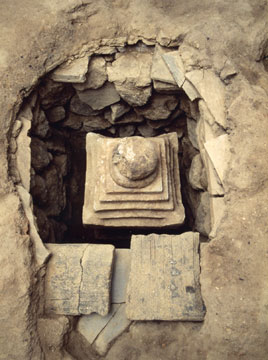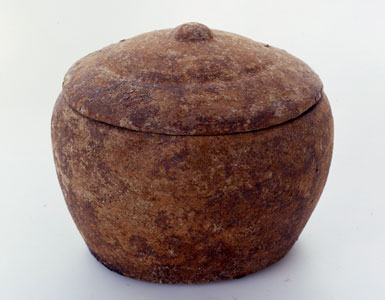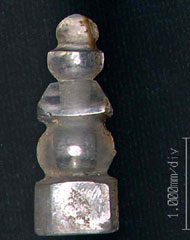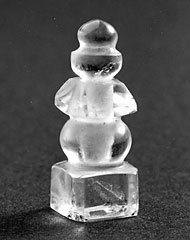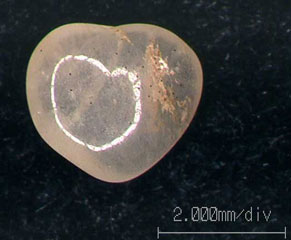Darumaji:
A stone stupa deposited upright, a new facet of Medieval Buddhist relic belief
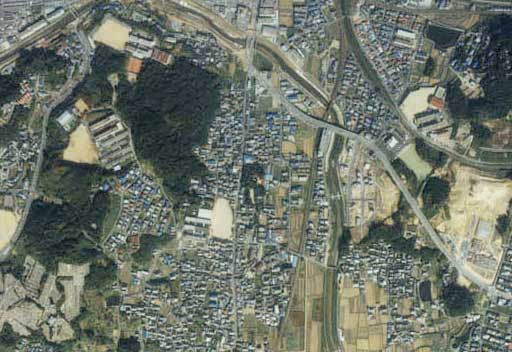
National Land Image(c)Ministry of Land, Infrastructure and Transport, Japan
(Above photo was shot in 1985)
|
|
|
|
|
|
Darumaji Temple, Ōji Town, Nara Prefecture
Okajima Eishō, Yamada TakafumiDarumaji is a temple whose maintaining a tradition of being founded on the legendary story of Prince Shōtoku and a starving man at Mt. Kataoka; the temple’s main hall stands above the tomb (kofun) said to be the starving man’s grave.
In an excavation of lower strata conducted in conjunction with repairs to the main hall, a small stone chamber was detected with a stone stupa deposited in upright position. A square hole had been carved into the body of the stupa, in which a haji ware lidded vessel had been placed, within which a quartz crystal reliquary in the shape of a Five Elements Stupa was found, in which a relic had been placed.
A stone stupa, ordinarily erected above ground, being deposited in an underground stone chamber in upright fashion, is exceedingly rare. From a typological examination of the artifacts, including the stone stupa, and the results of investigations in the vicinity of the main hall, the deposit is inferred to have been made around the mid 13th century. As the grave (kofun) of the starving man, held to have been an incarnation of Bodhidharma, was repaired at about the same time that Darumaji was founded, it is thought that the stone stupa was deposited in connection with the repair of the tomb. These artifacts and features may be evaluated as showing a new facet of Buddhist relic belief that was popular nationwide in the Medieval period.
